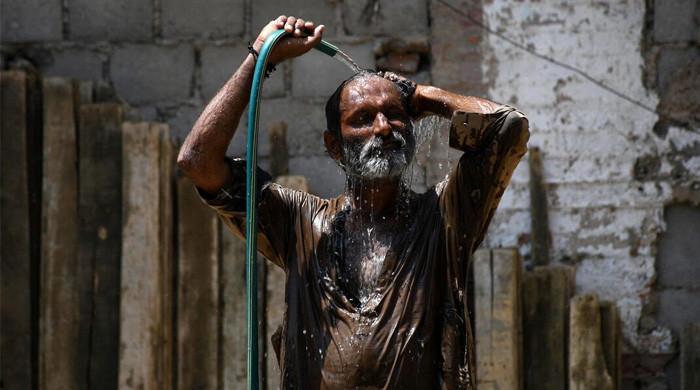Pakistan’s Soaring Temperatures: A Climate Crisis
For the second year running, Pakistan experienced an intensely hot April, deviating from the expected pleasant spring weather. Regions across Punjab, Sindh, and Balochistan saw temperatures exceeding 40 degrees Celsius, signaling an early and severe start to the summer season.
Muhammad Irfan Virk, Deputy Director at the Pakistan Meteorological Department (PMD) in Islamabad, remarked, “Over the past couple of years, spring has virtually disappeared in Pakistan. April is becoming increasingly hot, and this trend is a cause for concern.”
The PMD issued multiple heat advisories during April and May, with the most severe temperatures recorded on April 17 in Shaheed Benazirabad, Sindh, reaching a scorching 49 C.
According to the PMD’s climate summary, April 2025 was recorded as the second warmest April in the last 65 years, with 2022 holding the record. Data from the National Disaster Management Authority (NDMA) indicated that in May 2024 and 2025, temperatures in various regions were significantly above the long-term averages, ranging from 4 to 6 C.
The NDMA’s annual publication for 2024 highlighted, “This is an alarming trend, suggesting that future heatwaves could intensify due to continuous climate changes and human-induced factors.”
The intense heat was not unique to Pakistan. An international platform, ClimaMeter, reported that both Pakistan and India faced an “unusual early onset of the heatwave.”
ClimaMeter stated, “The heatwave in both countries is disproportionately affecting vulnerable populations and is severely straining human endurance, challenging the limits of survivability.” Islamabad was identified as one of the most affected cities, with average temperatures up to +3 C higher than in previous years.
A three-decade analysis by WWF Pakistan supports this, linking rapid urbanization in Islamabad to increased land surface temperatures.
The WWF report noted, “Rapid urban growth in Islamabad has replaced cropland, grasslands, and forests, making it one of Pakistan’s fastest-expanding cities. Islamabad’s built-up area increased dramatically by nearly 585%, while tree cover decreased by 10% between 1990 and 2020.” Similar trends have been observed in Lahore and Karachi.
The NDMA echoed these findings. A spokesperson stated that while southern districts of Punjab, Sindh, and Balochistan are climate hotspots, urban centers are warming at an accelerated rate due to the urban heat island effect. “Lahore, Karachi, and Islamabad are experiencing faster warming,” she added.
David Faranda, a climate scientist, suggests the disappearance of spring signifies a broader climate shift in South Asia.
He said, “The loss of a ‘buffer’ season like spring illustrates how extreme weather patterns are replacing gradual seasonal changes, especially in vulnerable regions like South Asia. Heatwaves should be considered as public health emergencies, not just weather events.”
In May, the climate change minister informed the National Assembly that 568 individuals lost their lives during a six-day heatwave last year, with 427 deaths occurring in Karachi alone. However, relevant organizations could not provide updated figures for heat-related deaths or illnesses.
A government official admitted the need for improved data collection to understand the severity of heatwaves.
Despite contributing less than 1% of global greenhouse gas emissions, Pakistan is among the most vulnerable countries to climate change. The country faces threats to food and water security and the livelihoods of millions due to floods, droughts, glacial lake outbursts, and increasingly frequent and intense heatwaves.
Adding to the climate woes, Islamabad was recently hit by a severe hailstorm that caused damage to infrastructure.
Hammad Naqi Khan, CEO of WWF Pakistan, emphasized that domestic planning decisions are exacerbating local impacts. He urged for city-specific heat-action plans.
Faranda suggested that cities should name heatwaves to raise public awareness, similar to Ahmedabad and Seville. He also proposed appointing dedicated “heat officers” to improve coordination during extreme weather events. Further, he advocated for climate diplomacy between India and Pakistan to save lives, calling for regional cooperation on data sharing, forecasting, and public health strategies.
“In a fragmented world, the climate crisis could foster humanitarian collaboration,” Faranda concluded.



Comments (0)
No comments yet. Be the first to comment!
Leave a Comment